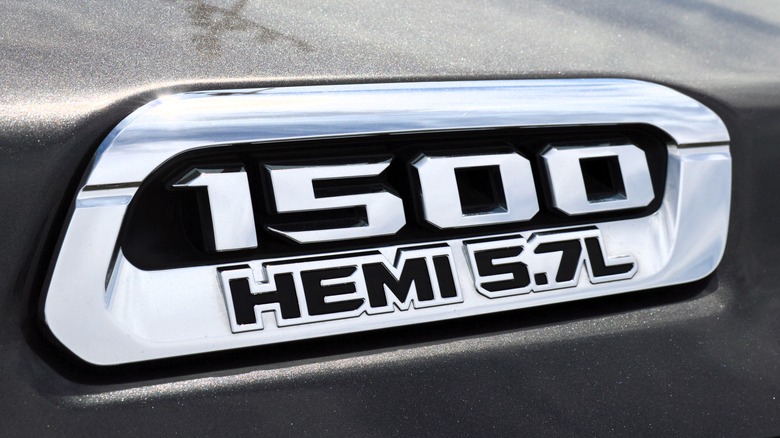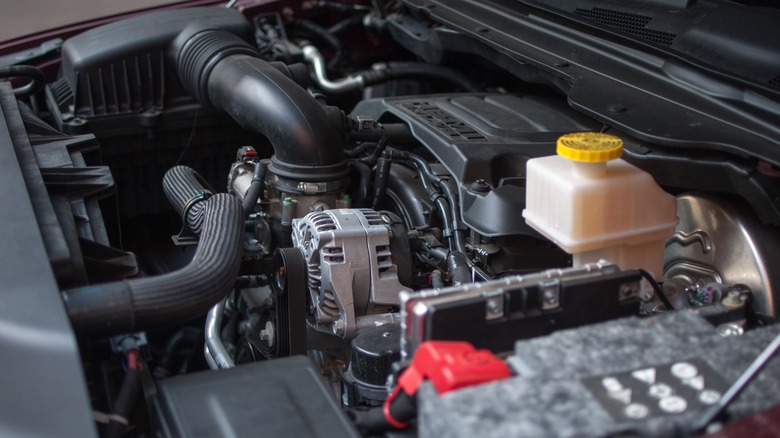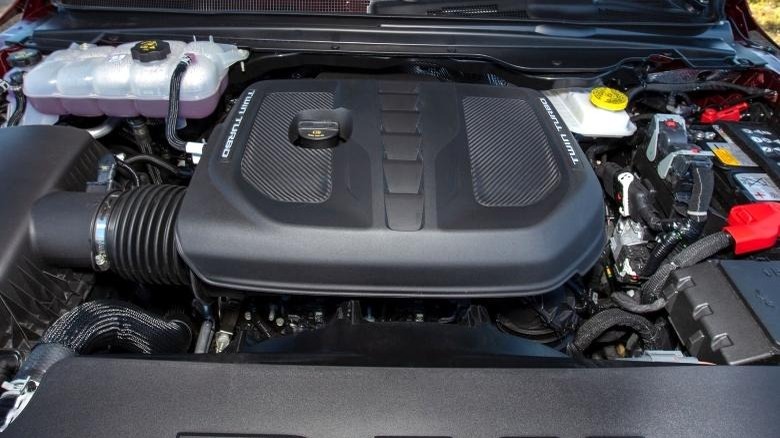Are HEMI Engines Fuel Efficient? Here's What Gas Mileage To Expect
HEMI engines have built an enduring legacy as some of the most iconic and powerful American V8s of all time. They were first used in cars in 1951 when Chrysler introduced the FirePower V8 in the likes of the Chrysler New Yorker, Saratoga, and Imperial. The original HEMI engine had a displacement of 331 cubic inches (5.4 liters) and produced 180 horsepower. Over the course of their three famed generations, HEMI engines have grown both in displacement and output, with some third and current-production versions making well over 1,000 ponies.
But while their performance credentials are well-established, the efficiency of HEMI engines doesn't garner as many headlines. However, with growing concerns about the environment, gas mileage has become an increasingly important consideration for many drivers. With that in mind, this article explores what you can expect from the latest iteration of the third-gen HEMI engines in terms of fuel efficiency.
HEMI engines return between 12-20 mpg of combined fuel economy
Stellantis will be discontinuing the HEMI engines after the 2024 model year, as it looks to focus its efforts on electrification and the more fuel-efficient Hurricane inline-six engine. However, EPA estimates indicate the HEMI engines haven't done all too badly in terms of fuel efficiency. For instance, a 2024 RAM 1500 with rear-wheel drive and the 5.7-liter HEMI engine returns an EPA-estimated 18 mpg in the city, 23 mpg on the highway, and 20 mpg combined.
Swapping out the rear-wheel drive for the four-wheel configuration sees the highway fuel economy rating drop marginally to 22 mpg, while the city estimate remains unchanged at 18 mph, resulting in a combined fuel economy rating of 19 mpg. Under the hood of a rear-wheel-drive 2024 RAM 1500 Classic, the 5.7-liter HEMI engine gains 15 mpg in the city, 21 mpg on the highway, and 17 mpg combined, while RAM 1500 Classic models with four-wheel drive return 15 mpg in the city, 20 mpg on the highway, and 17 mpg combined. Unsurprisingly, the 6.2-liter supercharged HEMI V8 engine in the 2024 RAM 1500 TRX is the least efficient of the current HEMI options tested by the EPA, as it achieves 10 mpg in the city, 14 mpg on the highway, and 12 mpg combined.
The HEMI V8 is only slightly less efficient than the Hurricane I6
While debuting the Hurricane 3.0-liter twin-turbo inline-six engine, Stellantis said it would offer better fuel economy than larger engines like the HEMI. Although that claim has turned out to be true, EPA estimates have shown that the difference between the two engines is almost negligible. In its most efficient state of tune, the 3.0-liter Hurricane engine achieves 18 mpg in the city, 25 mpg on the highway, and 21 mpg combined in a rear-wheel-drive 2025 RAM 1500. Four-wheel-drive variants of the 2025 RAM 1500 with the Hurricane inline-six are good for 17 mpg in city driving situations, 24 mpg on the highway, and 19 mpg combined.
For its part, the high-output version of the 3.0-liter Hurricane engine gains 15 mpg in the city, 21 mpg on the highway, and 17 mpg combined. In the 2025 RAM 1500 RHO, the rating dipped further to 14 mpg in the city, 16 mpg on the highway, and 15 mpg combined – meaning it's only a little better than the TRX's combined 12 mpg.


